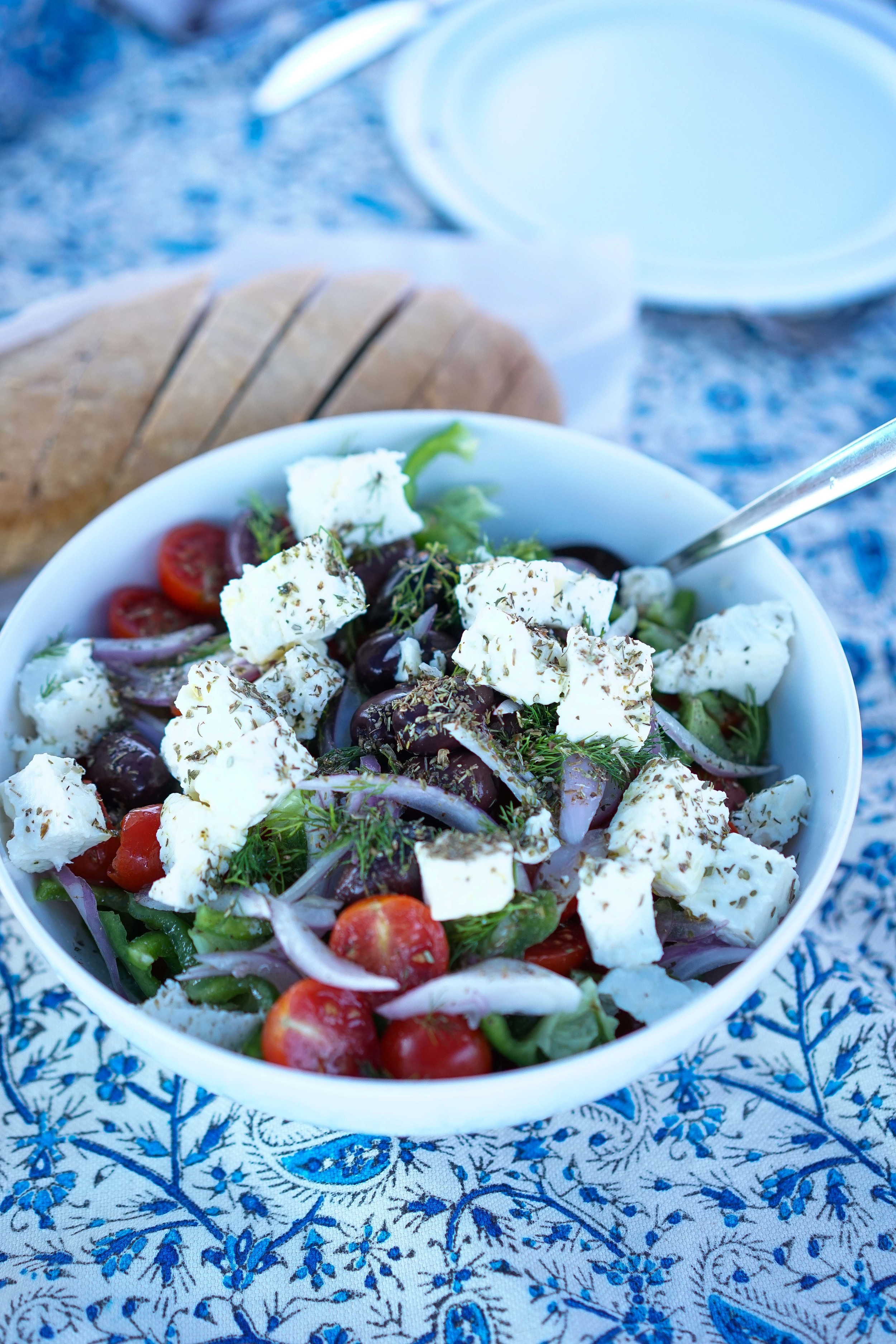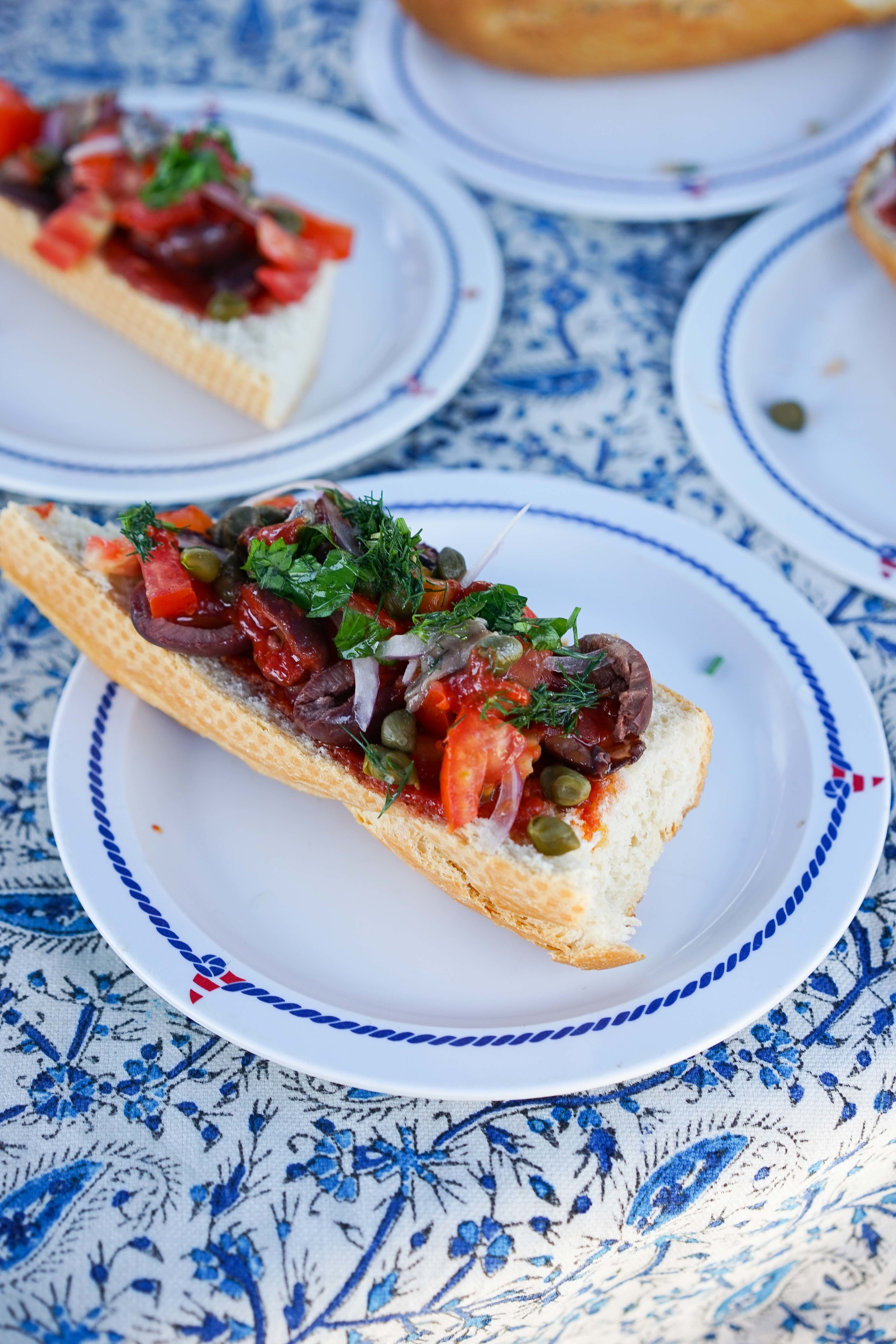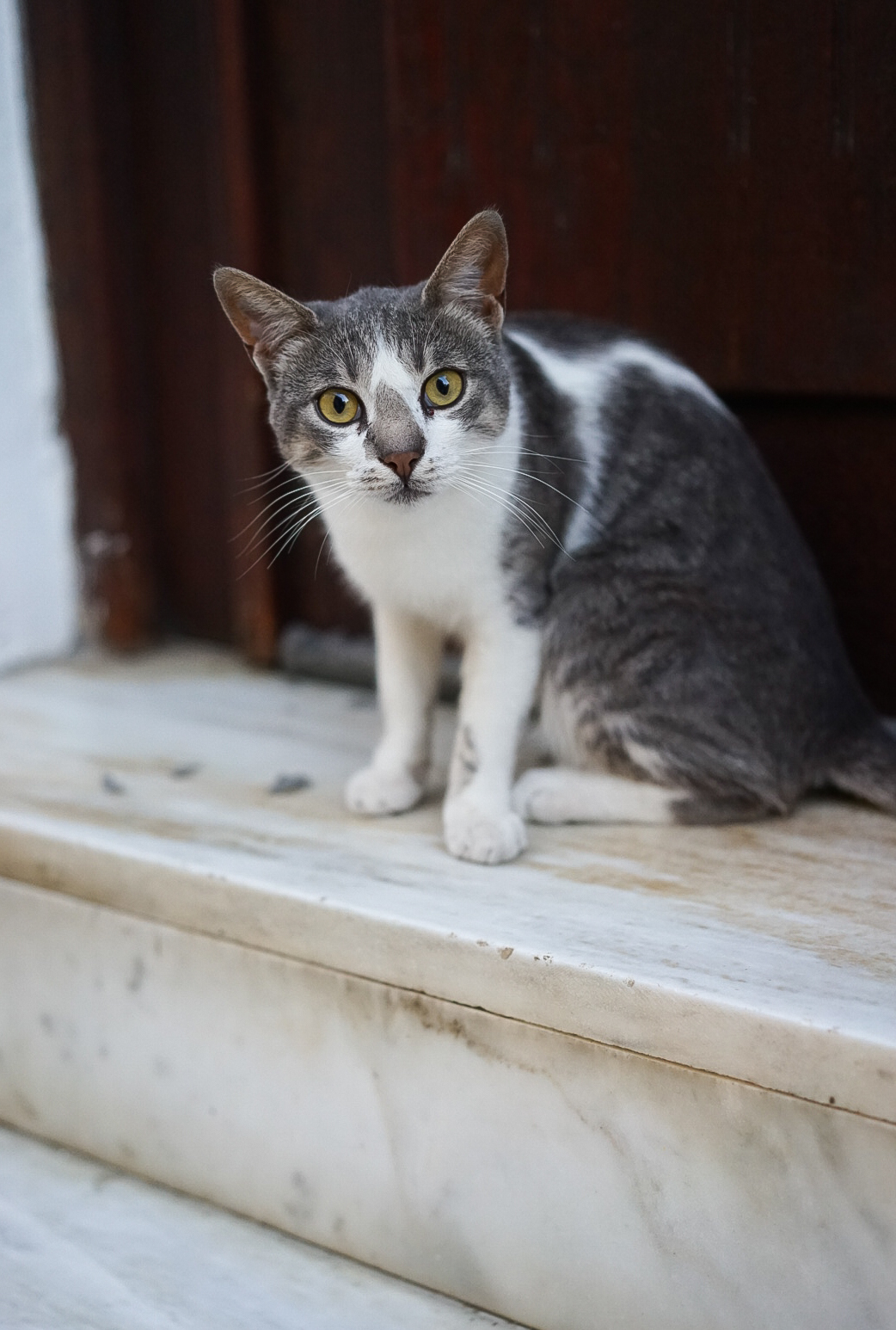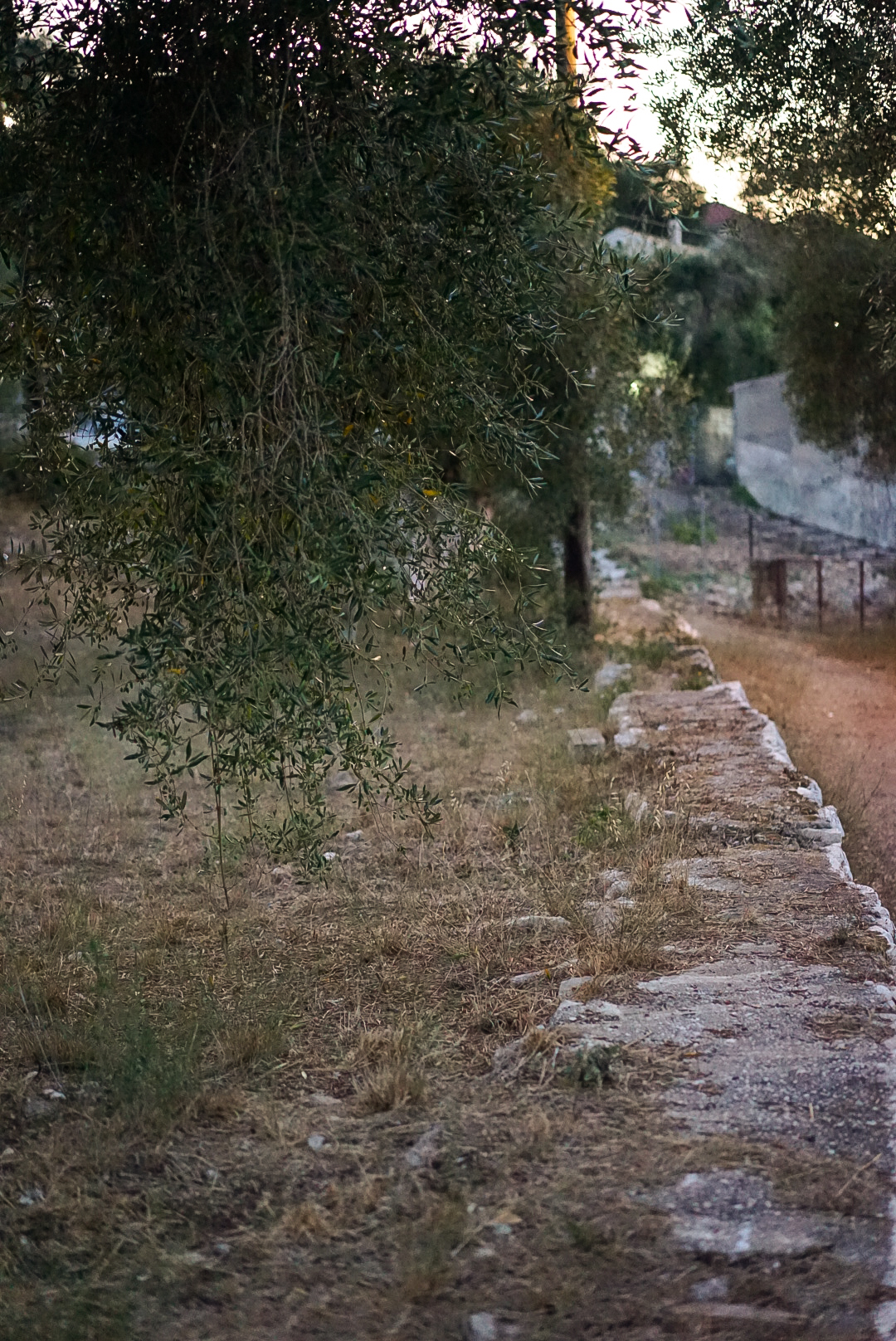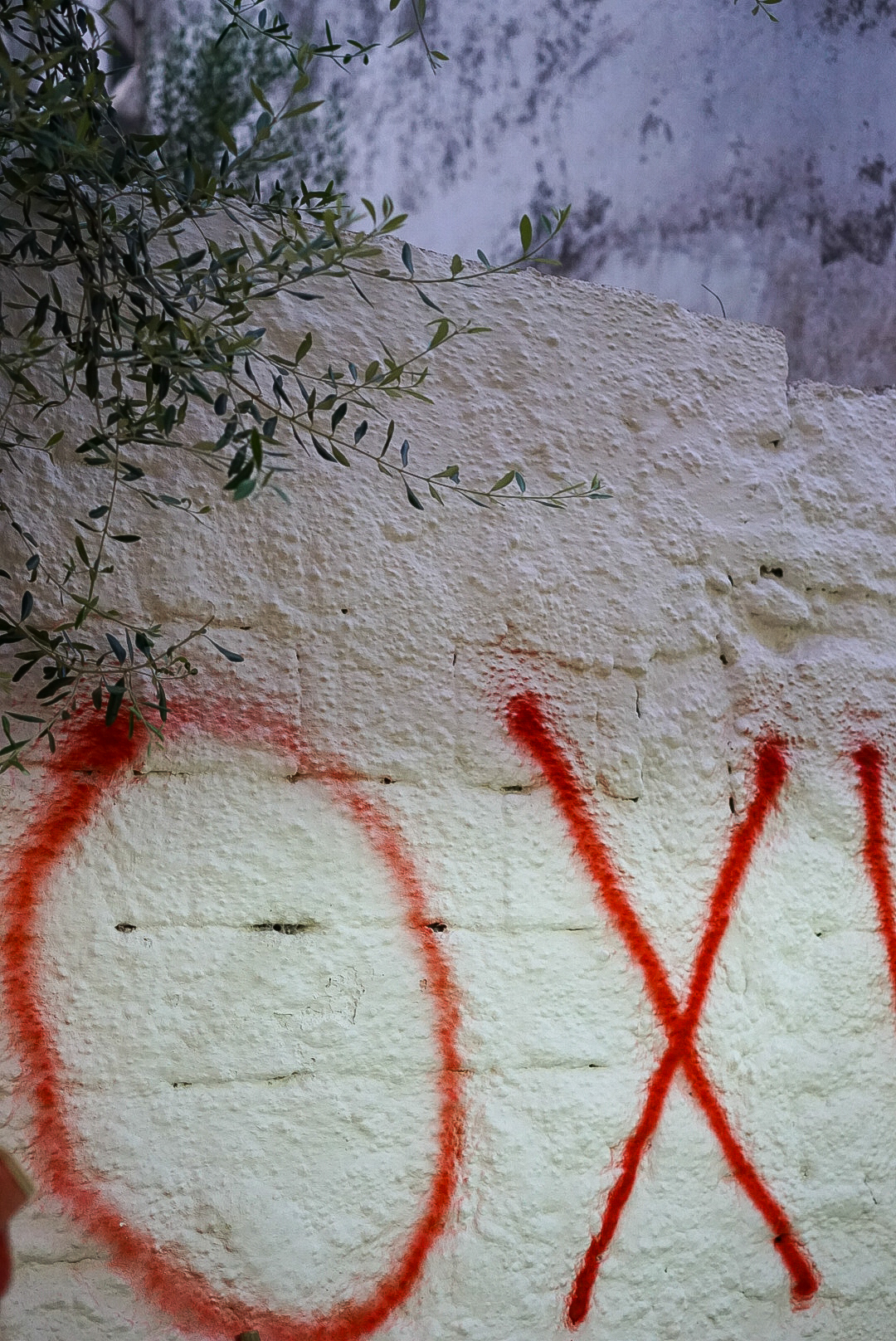One year ago it wasn’t ‘Brexit’ making headlines, but ‘Grexit’ – the possibility that Greece would leave the European Union. In response to this so-called ‘Grisis’ a ‘Greferendum’ (as it was ‘affectionately’ dubbed) was called – ‘Oxi,’ or ‘No’ meant ‘Yes’ for leaving, although the question wasn’t explicitly ‘Leave’ or ‘Stay,’ it was ‘Austerity’ or ‘No Austerity,’ (the phrase ‘all Greek to me’ certainly springs to mind). ‘No’ won on the day, its implication however, that Greece should leave, did not, and so, in the end, an emotional ‘No,’ morphed into a relieved ‘Yes,’ but it did so slowly and painfully, over the course of one very uncertain week. A week during which I was packing a bag ready to embark on a two-week sail around some of the Greek archipelago’s lesser frequented harbours…
It wasn’t clear what we could expect to find on arrival, but the warnings were dire. Shortages of fuel, cash, medicine, and food, said the headlines, especially on the islands. At home, I prepared accordingly by filling half a suitcase with packets of pasta. For fuel, we'd have the wind in our sails; not much need for money bobbing about on the sea; medicine, pfff, we were young (-ish), healthy (-ish); but a possible shortage of food – that had my full and undivided attention.
It wasn't just pasta. Tubes of tomato paste found their way into corners of the bag too; capers, packed in salt (weighs less than brine); anchovies, just in case, a few tins, tucked between snorkels and masks, canned tuna as well, for protein. By the end, an entire spice rack of bits and bobs had found a home amongst our swimwear and towels, because, like the Scouts say, ‘never unprepared,’ or never, at least, for seasoning emergencies!
What we actually found on arrival, despite it all, was island Greece soldiering-on, going about business as usual as best it could. Café tables still by the sea, paper tablecloths still flapping in the breeze, bottles of olive oil and that strange pale vinegar. Customers too, lots of them. And food. And bad wine (sometimes the best wine), cold, in little jugs, sweating a dew, dissolving a ring into the thin paper cloths. The fishermen on the docks were getting on with fishing, bakers getting on with spanakopita-making, and alley cats getting on with making a welcome nuisance of themselves around the legs of every restaurant table.
And so, happily, for us too this meant (holiday) business as usual. Which, on a sailing boat, waiting for the wind to pick up, bobbing up and down on a limpid afternoon, typically means doing a lot of very little. Shooting the breeze as it were. Meandering conversations, the hours passing, distant shores always promising to emerge from the heat haze, but never actually delivering, theories posited, slow freight trains of thought followed, conclusions never reached …
On one such long afternoon, the train began like this: ‘How many everyday phrases can you think of that have nautical origins?’ Some are quite straightforward – ‘I don’t like the cut of his jib!,’ to mean untrustworthy, apparently from the days when pirate ships might be identified by a particular type of front (or jib) sail. Similarly, to say someone is ‘three sheets to the wind,’ or out of control, ‘sheets’ being the ropes you use to adjust the sails on a yacht. Others however, are less obvious: 'No room to swing a cat,’ for instance, does not reference an arcane form of animal cruelty, but, it turns out, an antiquated form of human cruelty instead. The 'cat' in question is 'o’ nine tails' (a particularly nasty type of whip), the phrase, essentially, a lament about galley spaces too small to allow for a decent flogging!
There are lots more where these came from – ‘Dressed to the nines,’ ‘Footloose,’ ‘To get hitched.’ A stray whiff of mobile signal turned up an entire organisation devoted to the subject, their website a glossary of seafaring sayings, alphabetised, running to tens of pages! That lazy afternoon, the wind hanging languidly about at barely five knots, we had plenty of time to ‘run the gauntlet’ (another naval punishment involving whips apparently) from A to Z, before, inevitably, it was time to find our way into a narrow berth, and the wind was suddenly back to its blustery best!
We’re back on board the boat now. In Sardinia this summer, not Greece. Some of the old crew from last year, a couple of new. The bag I’ve packed is the same one though, dusted of last year’s stray oregano leaves and salt flakes, only to be replaced with a batch of fresh ones! Packets of pasta snuck in there once again too, anchovies, capers, tomato paste, all of last summer’s contingency plans… Not because you can't buy these things in Sardinia. You definitely can. But pre-armed with spaghetti and spices, I've come to believe, is the way to face a crisis. Personally at least, these are my tools, and they are all I’ve got. With crisis seemingly contagious nowadays, I figure it can’t hurt to be prepared – even if just for a decent lunch and little else!
Maltese Crazy Bread (Hobz biz-Zejt)
Not wanting to waste non-perishables (but also disinclined to pack them all back into the bag!) more than a few lunches afloat were of Hobz biz-Zeit, or what I call Maltese Crazy Bread. It wasn’t always so crazy. The version our Maltese grandmother served up when we were kids was a lot less crowded, just the chopped olives, tomato paste, and olive oil base really. I’d heard that there were some ‘crazier’ variations about though, and with a ton of anchovies and capers to use up, as well as fresh tomatoes, onions, and herbs (from the definitely-no-shortage-of-food Greek markets), the temptation was to get as crazy, piled-high, and salty as possible!
Ingredients
(Serves 4)
- Four thick slices of crusty white bread or halved baguette
- 3 tablespoons tomato paste
- 2 tablespoons extra virgin olive oil
- 100g Kalamata olives – pits removed
- 100g cherry tomatoes – cut into quarters
- ¼ of a red onion – finely sliced
- 1 tablespoon capers
- 8 anchovy fillets – cut into 1-2cm pieces
- Fresh parsley and/or dill – finely chopped to go on top
Mix the tomato paste and oil, along with a few drops of water in a small bowl until they are well combined. Spoon this generously onto the slices of bread.
Next pile the other ingredients on top – onions, tomatoes, olives, capers, and anchovies.
Drizzle a bit of extra olive oil over the top if you’d like. Sprinkle the chopped parsley and/or dill on top. Any number of variations can work – sun-dried tomatoes could be nice instead of fresh – just keep the basic tomato paste – olive oil – black olive trinity as the starting point!
Baked Feta
This is a taverna staple in the Northern Ionian, appearing on menus alongside that other famous Greek dish of cooked cheese – fried saganaki – creating an obvious problem. If it’s not OK to consume two slabs of cheese in one sitting, which is it to be? Divided on this topic, we created rotas, rules – if it’s saganaki at lunch, then it’s feta for dinner, alternating days, and so forth. My decision to include the feta recipe and not the saganaki however, is not a statement of preference, (to be honest, the photos were just nicer, more colourful!). I was, and remain, of the third, and apparently unpopular opinion that there was never in the first place anything wrong with ordering two different types of cooked cheese for lunch! More the merrier.
Ingredients
(Serves 2)
- One quarter of a small red onion – finely sliced
- Handful of cherry tomatoes
- Half a small green pepper – finely sliced
- A tablespoon of olive oil
- One 200g packet (or thick slice from a block) of Sheep's feta
- A few black Kalamata olives – pitted
- Freshly ground black pepper
- Sprinkle of dried oregano
- Juice of half a lemon
Preheat the oven to 200°C.
Lay a large sheet of baking paper over a shallow oven dish, then pile the chopped onions, peppers, and tomatoes onto this, making a bed for the feta. Position the cheese, then on top of this, sprinkle some oregano, and drizzle over the olive oil.
Pull the sides of the paper up over the feta and seal either by folding over, or with a bit of kitchen string, to form a loose parcel.
Bake for between 20-25 minutes in the hot oven. Towards the end, unseal the parcel and open the paper out in order to brown the edges of the cheese. The feta is ready when its edges are golden and melt-y.
Lastly, squeeze over the lemon juice, and serve hot from the oven with some crusty bread.
Grisis Spaghetti
This spaghetti has become a bit of a kitchen crisis staple for me over the last year. Easily adapted for run-of-the-mill ‘nothing in the fridge’ crises, it has also come in handy recently for more serious ‘nothing in the cupboards’ moments – like when you move house, which I’ve done five times now in ten months. Just before you leave one place, before it’s onto the next, in that week when you’re loath to buy anything fresh lest it doesn’t get used and ends up going to waste – there is always a saved end of parmesan in the fridge that needs using, a bit of garlic forgotten in a kitchen corner, the half empty pack of pasta – it never fails to surprise me, the miraculous transformation from almost nothing, to something, and to something unexpectedly good. So good I sometimes feel as though it puts my more elaborate efforts to shame!
Please feel free to adapt, embellish, or substitute as your (empty) pantry allows…
Ingredients
(Serves 4)
- 300g dried spaghetti
- 60ml extra virgin olive oil
- 8 anchovies
- 4 cloves garlic - minced
- 80ml white wine (or water)
- 250g ripe cherry tomatoes
- Pepper (no need for salt)
- Pinch of sugar
- A few tablespoons of capers
- Handful of black Kalamata olives – pits removed
- 50g parmesan cheese – grated (50g of fried breadcrumbs if you’re out of parmesan)
- A squeeze of lemon juice
- An extra drizzle of olive oil to serve if you’d like
Fresh Herbs (optional):
- Parsley
- Dill
Boil a large pot of salted water ready to cook the spaghetti.
Meanwhile, in a large, heavy-bottomed pan, heat the olive oil and gently fry the anchovies along with the minced garlic. Mash the anchovies a little with the tip of a wooden spoon to break them up as you do so, and stir continuously to ensure that the garlic does not stick or burn.
Next, add the whole cherry tomatoes and cook for a few minutes, stirring again, and continuing to keep an eye on the garlic. When the tomatoes start to pucker and lose their shape a little season with some pepper (no need for salt as the anchovies are salty enough), sprinkle over the sugar, and slosh in the wine or water. Add the olives and capers now too.
Once you’ve done so, add the spaghetti to the pan of boiling salted water, and cook for between 7-9 minutes, before draining.
Continue cooking the sauce down while the spaghetti boils, then add the drained pasta quickly to the sauce along with a tablespoon of the cooking water. Toss everything together to coat the spaghetti with the sauce.
Finish with the herbs, stirring these through as well, then sprinkle the parmesan on top to serve.


